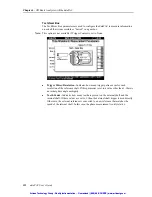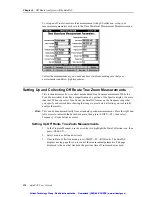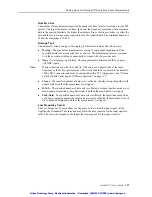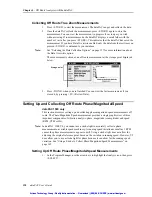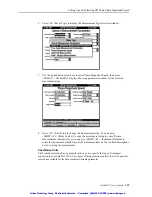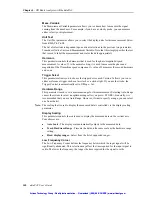
146
dataPAC User’s Guide
Chapter 4 - Off Route Analysis with the dataPAC
Window
Press <SELECT> key in the Window box to specify the windowing function applied to the
time waveform that is used to compute the spectra.
z
Hanning - A general purpose window for use with random-type data. Hanning
provides a good compromise between amplitude accuracy and frequency accuracy. Use
this setting for most of your machinery monitoring activities.
z
Hamming - A general purpose window that is similar to the Hanning window. It
provides better frequency resolution but decreased amplitude accuracy when compared
to the Hanning window. You can use it to separate close frequency components.
z
Kaiser-Bessel - This window is even better than the Hamming for separating close
frequencies because the filter has even less leakage into side bins. However, the initial
main envelope covers several bins, so resolution is less than with Hamming. Gives fair
peak amplitude accuracy, fair peak frequency accuracy.
z
Flat Top - This window has a very wide filter which covers several bins. It shows a
signal appearing at several frequencies, but has the advantage of giving very accurate
amplitude. Its primary use is for calibration. Use this when amplitude accuracy is more
important than frequency resolution. In data with closely spaced peaks, a Flat Top
window may smear the peaks together into one wide peak. Use this setting for
sinusoidal or calibration signals.
z
Rectangular - The data collector does not apply a window. Use this for transient
signals that die out before the end of the time sample, or for exactly periodic signals
within the time sample. The advantage of using this comes in start-up or coast-down, if
the windows are triggered by a signal in phase with rotation, where very good tracking
order can be achieved.
Number Lines
Press <SELECT> to display a list of the number of lines (bins) of resolution for the spectra.
The larger the number of lines, the better the frequency resolution of the measured data in
the spectra. Similarly, the higher the number of lines, the longer it takes to collect the data,
and the more storage space required to save the data. The minimum number is 25, and the
maximum number is 12,800.
Data Sets
Press <SELECT> in the Data Sets box to select the number of data sets to be collected.
A data set consists of a single FFT for an FFT/Waterfall measurement. A data set consists of
a phase, magnitude, speed, and acceleration measurement for a Bode/Nyquist measurement.
Note: It may not always be possible to collect and display the specified number of data sets. This
occurs if the machine goes through the specified speed range faster than the dataPAC can
collect the data. Under these conditions, the dataPAC collects as much data as possible.
Setting the Display Update parameter to Final Results minimizes this problem by removing
the live-time display burden.
Use the arrow keys to select from the list, then press <SELECT> when complete. If you
select Custom, use the edit window to enter the specific number of data sets to be collected,
between 2 and 999, and press <DONE>.
Artisan Technology Group - Quality Instrumentation ... Guaranteed | (888) 88-SOURCE | www.artisantg.com
Artisan Technology Group - Quality Instrumentation ... Guaranteed | (888) 88-SOURCE | www.artisantg.com

